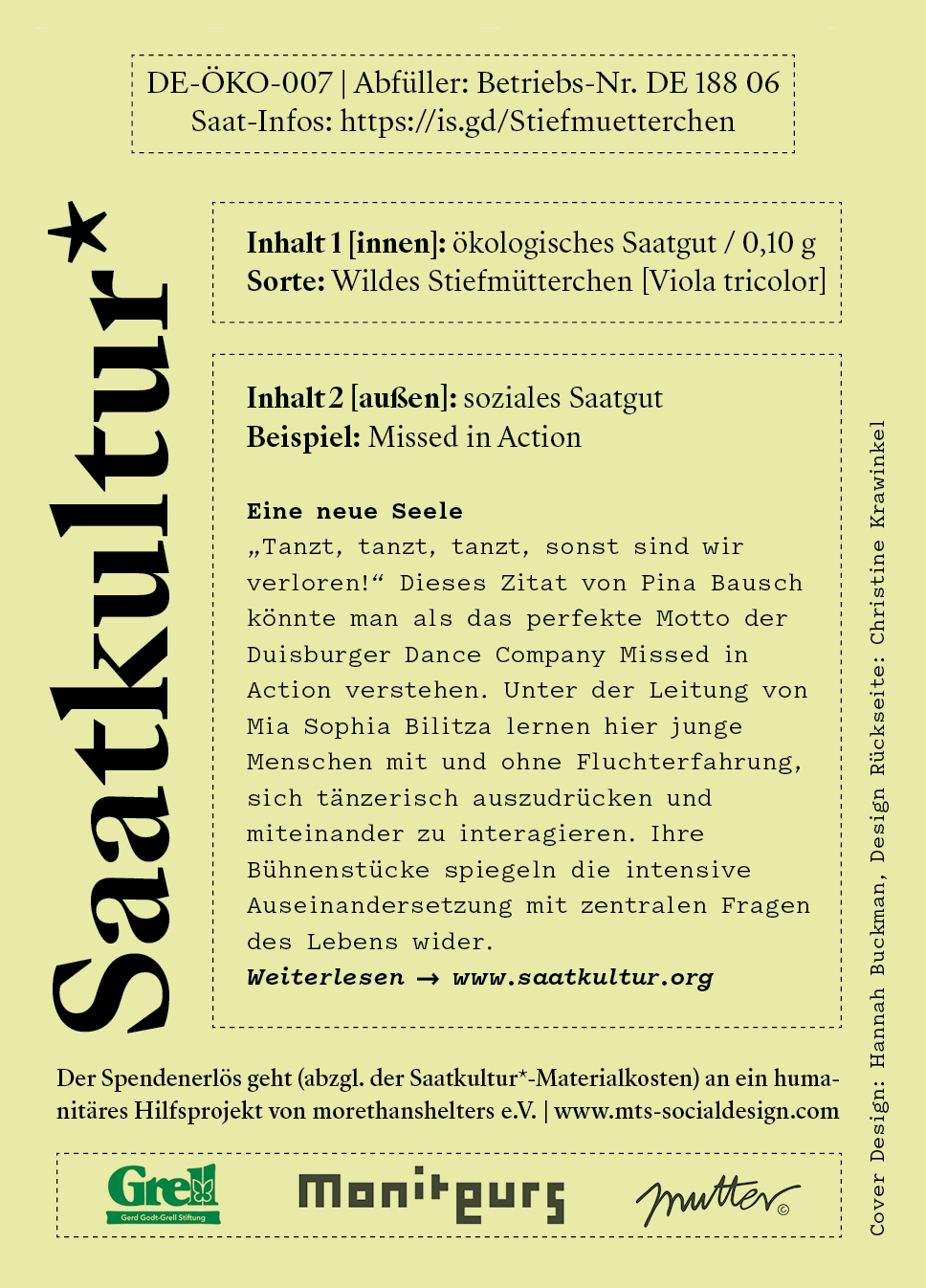Wild pansy
(Viola Tricolor)
This species belongs to the violet genus and originated in Europe and western and central Asia. Today, however, it also grows in North and South America. It was first mentioned by the botanist Carl von Linné in 1753 in his work Species Plantarum. In popular medicine, it was used against respiratory diseases, as a dehydrating agent and for the supportive treatment of rheumatism.
The German name, Stiefmütterchen (stepmother), relates to the arrangement of the overlapping petals. The broad lowest petal is called the stepmother, the lower lateral petals are her daughters and the upper petals are her stepdaughters. In other languages, for example French and Spanish, the plant is also called “wild thought,” and in English, the word pansy is likely derived from the French pensée (thought). For this reason, it has probably been a recurring theme in literature, where Shakespeare mentioned it in both A Midsummer Night’s Dream and Hamlet.
Numerous crosses of the wild pansy have resulted in the multicolored cultivated forms that now grow in many gardens. The tricolored flowers of the wild pansy – purple, white and yellow – are edible and can be used, for example, to decorate salads.

